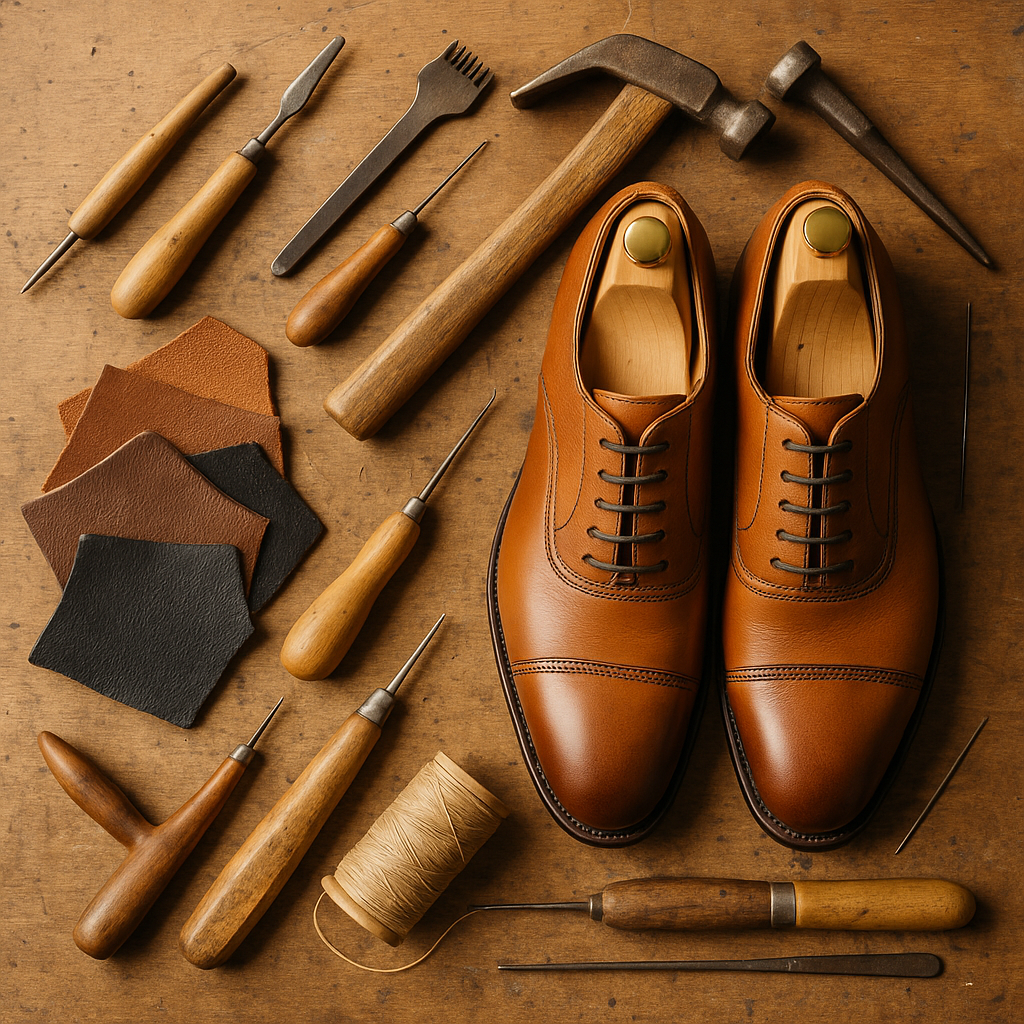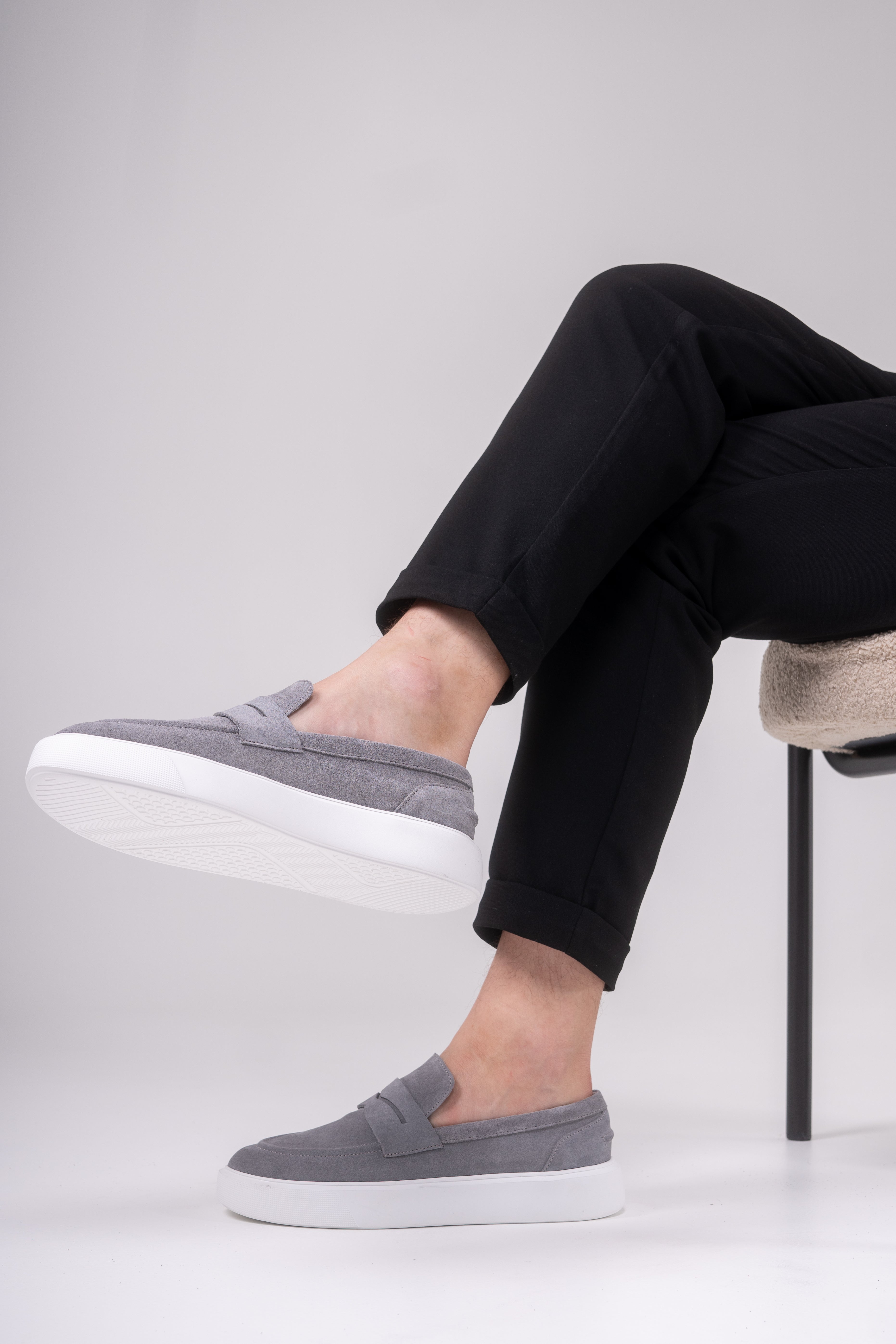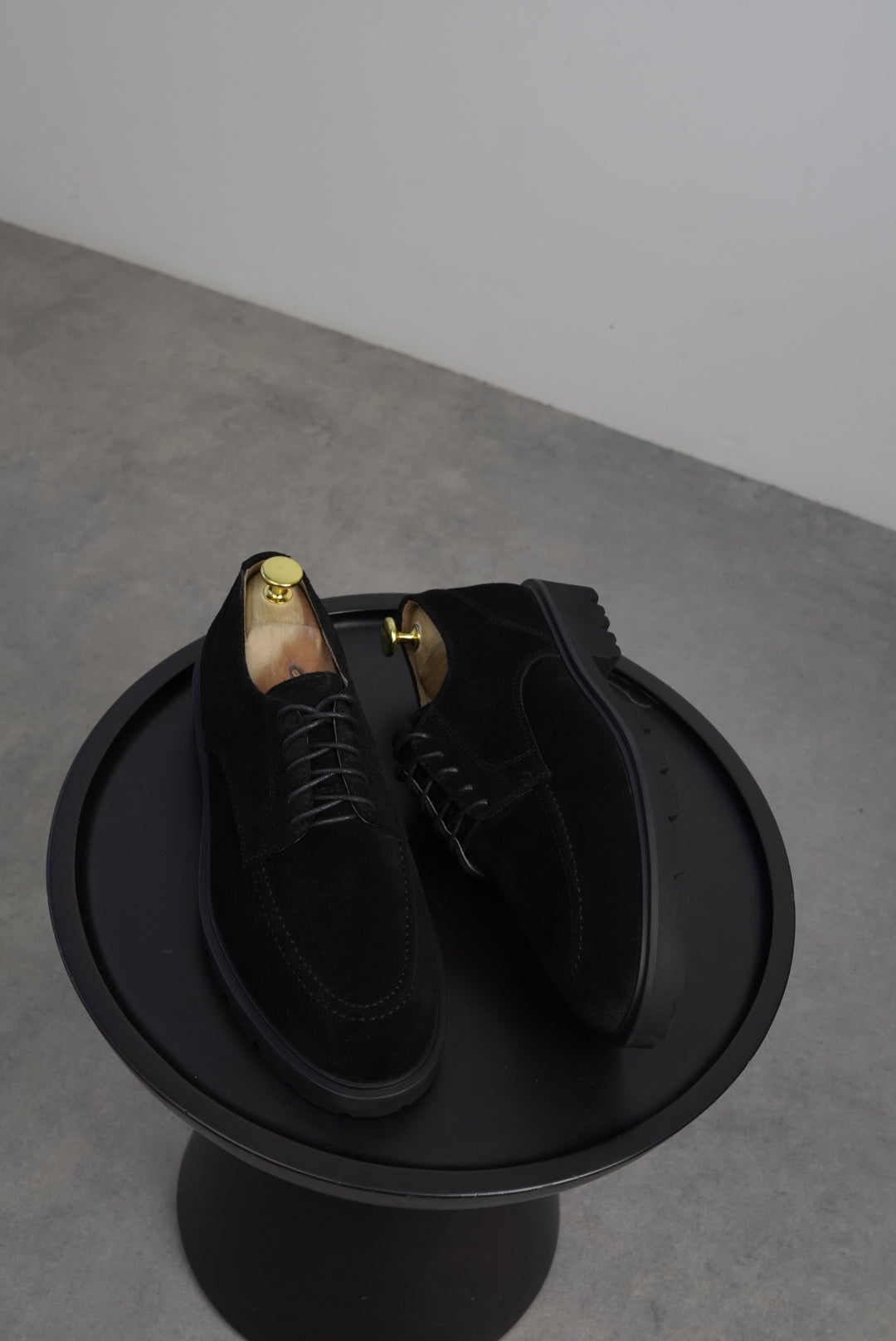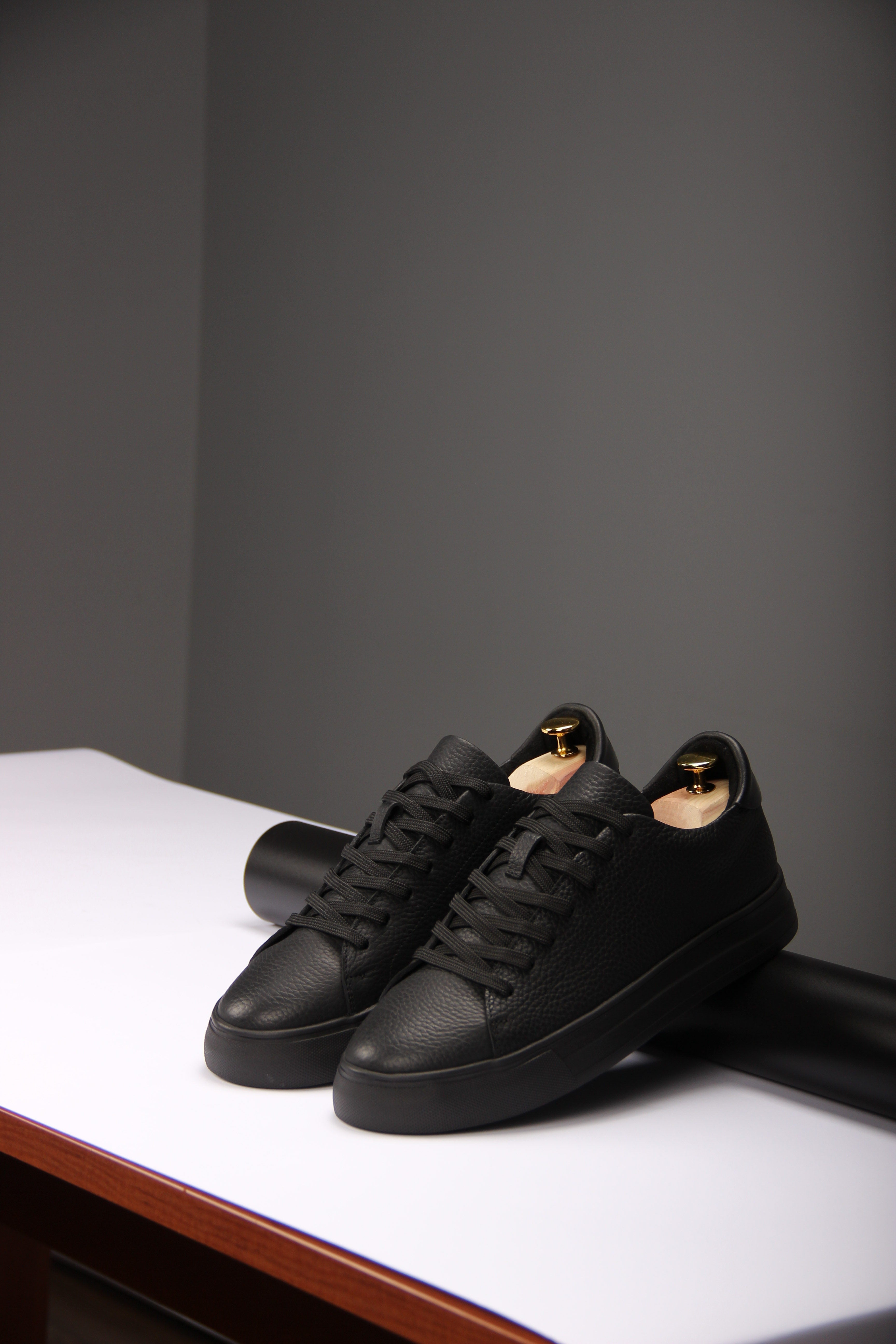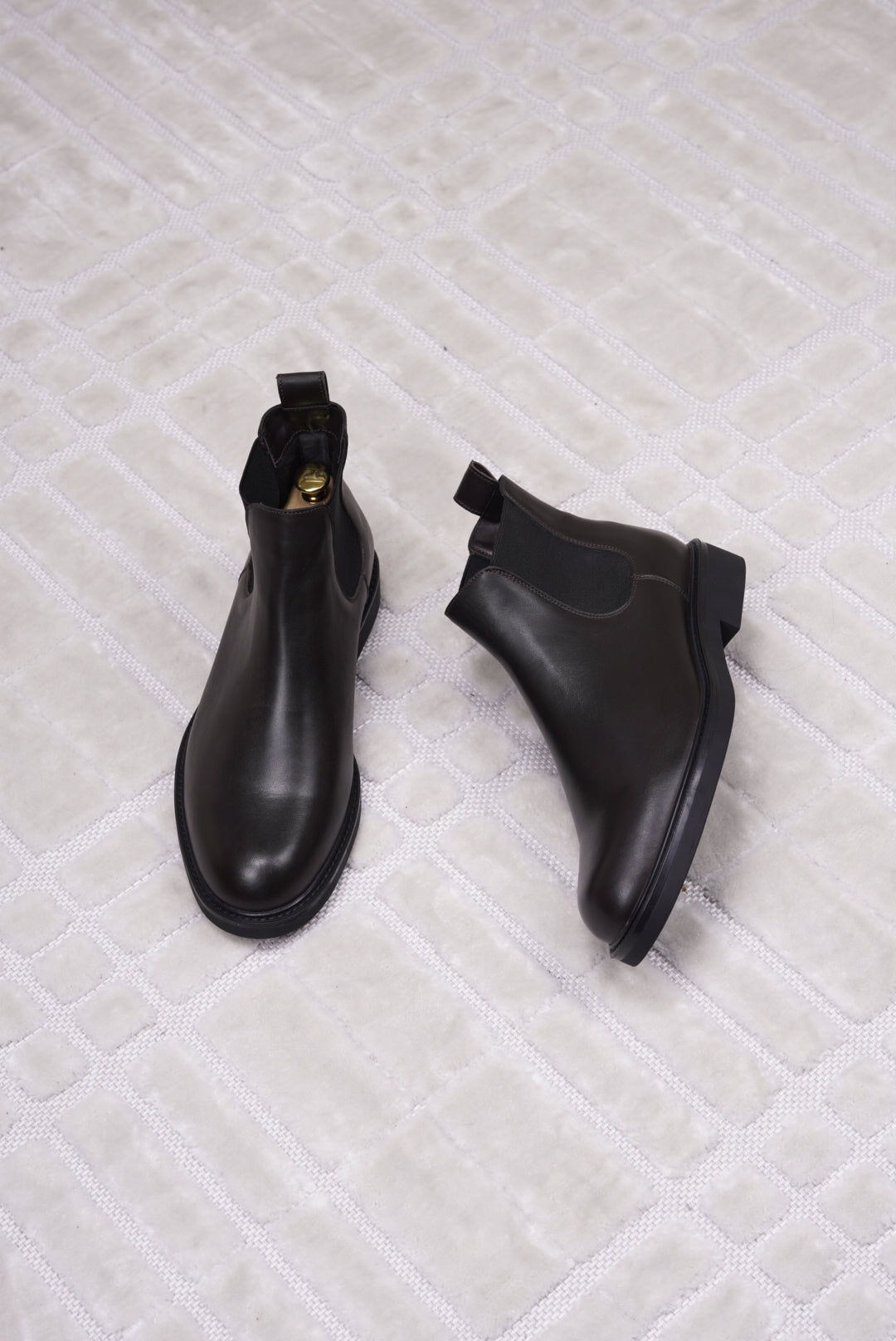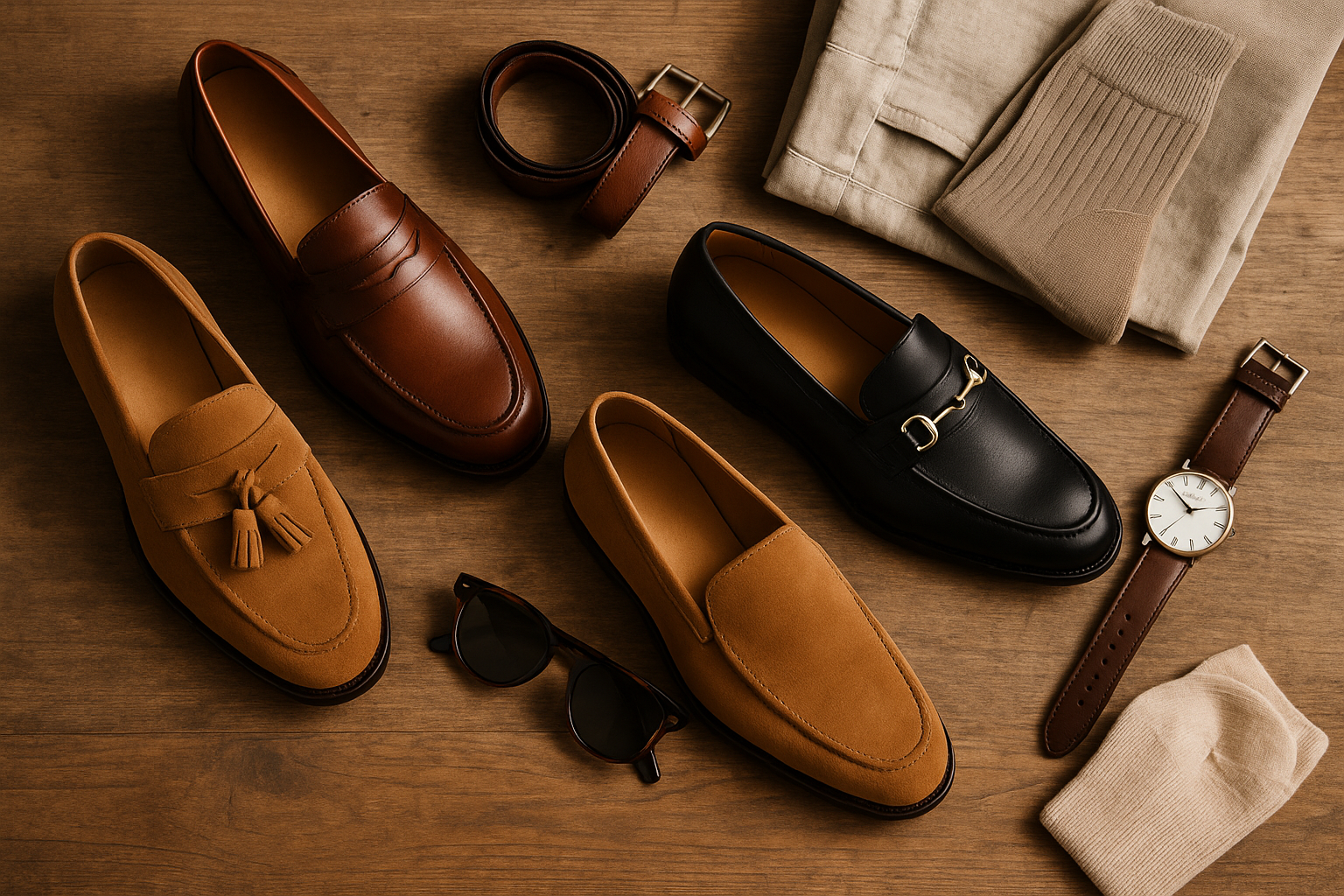
How to Choose the Perfect Pair of Men’s Loafers
Old money style is quiet confidence, not loud logos. It looks effortless because the pieces are simple, well made, and worn the right way. Men’s loafers sit at the heart of that look. No laces, clean lines, and leather that ages with you. Get the loafers right, and the rest of your wardrobe falls into place.
A brief origin story
Loafers started as slip on shoes for off duty life, then moved into offices and evening plans. The magic is simple construction, clean lines, and no laces. That mix made men’s loafers a staple that works with denim, suits, and most things in between.
Meet the main styles
Penny loafer. The classic. A strap with a small cutout sits across the vamp. It reads tidy and adaptable, so it is an easy choice for a first pair.
Tassel loafer. Slightly dressier with movement on the vamp. Good for tailoring and for smart casual looks.
Horsebit loafer. A metal bar replaces the strap. It leans elegant. Think sharp trousers, fine knits, and clean lines.
Venetian loafer. Plain front, smooth and minimal. Great when you want the shoe to blend into the outfit.
Belgian loafer. Low profile with a small bow. Refined and light.
Driving loafer. Rubber pebble sole and flexible build. Best for casual wear and travel, not a daily office shoe.
Kiltie or fringe loafer. A layered piece of leather covers the vamp. A little vintage, a lot of attitude.

Leather or suede
Both can be the best loafers for men, it depends on the job. Full grain leather is durable, holds shape, and shines with care. Suede breathes well and brings rich texture that softens tailored outfits. If you live in rainy weather, start with leather loafers, then add suede once you own a basic rotation. Keep a spray for protection and a brush for quick refreshes.
The anatomy that matters
The last sets the shape. A round last leans classic and forgiving. A chisel or almond toe reads sharper. The instep controls hold. If you have a high instep, look for a pair with a slightly higher apron and a firm heel counter. The sole changes grip and formality. Leather soles look sleek and work well indoors. Rubber or a studded sole adds traction for city sidewalks. Stitching tells you how the shoe was built. Blake feels light and flexible. Goodyear welted shoes are more structured and easier to resole. Cemented pairs cost less and handle occasional wear, but they do not age as well.
How to choose loafers that fit right
Slip them on in the afternoon when your feet are at their largest. Your heel should sit deep with minimal lift. Toes need room to splay, not swim. The vamp should hug without pinching. Leather will relax, but it should not hurt on day one. If you plan barefoot wear, test without socks and check for rubbing at the heel collar. If you plan socks, bring the weight you’ll wear most.
Color, then texture
Start with brown. Mid-brown or chocolate works with denim, navy, charcoal, and olive. Darker shades handle dress code jumps with ease.

Add black if you wear suits often. Then explore texture. Suede in snuff or tobacco looks great with chinos and knit polos. Grain leather hides scuffs and brings interest to simple outfits. If you want a single travel pair, choose a dark brown penny loafer in supple leather with a thin rubber sole. It can move from a flight to dinner without a swap.

Styling made easy
Business casual. Penny or tassel loafers with wool trousers, an oxford shirt, and a light jacket. Add a belt that matches the shoe family.
Smart casual. Suede loafers with chinos or pressed denim, a fine knit, and a casual blazer. Roll the hem to a light break so the vamp shows.
Relaxed weekend. Driving loafers or soft Venetians with tailored shorts or linen pants. Keep the top half neat to balance the casual shoe.
Tailoring. A black or deep brown horsebit or tassel loafer can pair with a suit if the cut is modern and the hem is clean. If the event is formal or the dress code says black tie, switch to proper dress shoes.

Socks, no show socks, or none
You can wear loafers barefoot, but comfort comes from the right prep. Use no show socks with a low profile cut, then dust a little cedar or talc in the shoe after the day. With suits, go for fine dress socks that match the trouser or echo a tone in the outfit. Loud socks can work, but let the shoe and the line of the pants lead.
Care that keeps value
Brush dirt after each wear. Use shoe trees as soon as you take them off. Condition leather a few times a year, then add a light polish for protection. Suede needs a spray protector and a quick brush to lift the nap. Rotate pairs so each one dries fully. When the edges look tired, get a resole or a new top lift before damage reaches the upper. These small moves are how you turn good men’s loafers into the best loafers for men in your closet.
Quick buying checklist
-
Choose the style that fits your week, then pick the last shape that matches your foot.
-
Start with brown leather, then add suede.
-
Check heel hold, vamp comfort, and toe room.
-
Pick a sole for your streets and weather.
-
Plan outfits. If you can picture three looks immediately, it is the right pair.
The right loafers do more than save time in the morning. They sharpen casual looks, relax tailoring, and travel well. Learn how to choose loafers, invest in materials that age with you, and your next pair will earn miles without losing shape.

